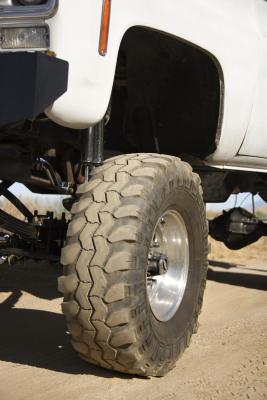
Chevrolet Silverado full-size trucks use a hub and wheel bearing that is a single, sealed unit. The wheel speed sensor for the anti-lock braking system also works with the hub wheel bearing as well. The wheel hub bearing assembly attaches the wheel to the steering knuckle and the suspension and steering components of the truck. The hub connects to a splined axle shaft that provides power in four-wheel drive trucks and is freewheeling in two-wheel drive trucks. Wheel bearings on the Silverado are permanently lubricated from the factory and are non-repairable.
Evaluate the vehicle symptoms carefully. If you are diagnosing the vehicle for someone else, ask as many questions as possible about the problem with the vehicle. Ask if the driver is feeling any vibration while driving down the road, or hearing any noises. Take note if the ABS malfunction indicator light is on. If you are diagnosing your own vehicle, write all of the symptoms down to help you clarify exactly what the problem could be.
Drive the vehicle on a short test drive and listen for any noises to verify the symptoms. Wheel bearing noise will usually start at relatively slow speeds and increase in intensity as the vehicle speed increases. The noise may change when you lightly apply the brakes, or perform light side-to-side steering maneuvers if a hub wheel bearing is to blame.
Lift the vehicle in the air with a floor jack or vehicle lift. Spin the front wheels by hand and listen for a noise from either or both sides. If you hear an abnormal noise, the bearing has failed and needs to be replaced. Confirm the noise by running the truck on the lift and listening with a mechanic's stethoscope, if necessary. Place the probe for the stethoscope close to the hub, in an area that is not spinning with the wheel. You should hear the noise clearly when you are listening close to the hub, and the noise will fade as you move the probe further away.
Mount a dial indicator so that the measuring surface contacts the vertical surface of the wheel at about the top of the upper wheel stud. Zero the meter's gauge by rotating the face so that the needle is at 0.000 inches. Grasp the top and bottom of the wheel and attempt to move it in and out. Be certain that any movement is in the hub and not the steering knuckle. Take note of the dial indicator measurements. If the wheel moves more than 0.005 inches, the bearing has failed and must be replaced.